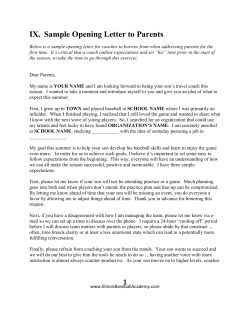
Traditional Games were not just games, they were designed in
Traditional Games were not just games, they were designed in such a way that one can develop lot of skills like logical thinking, building strategy, concentration, basic mathematics, aiming, and lot more. Nowadays we develop these skills by paying money to centers that conduct personal development courses. Traditional Games act as learning aids. They teach us many things while playing like to learn to win and lose, develop sensory skills, count, add, improve motor skills, identify color, improve hand-eye coordination and finally to have fun, naturally one play or watch a game to have fun. Though kabaddi is primarily an Indian game, not much is known about the origin of this game. There is, however, concrete evidence, that the game is 4,000 year old. It is a team sport, which requires both skill and power, and combines the characteristics of wrestling and rugby. It was originally meant to develop self defence, in addition to responses to attack, and reflexes of counter attack by individuals, and by groups or teams. It is a rather simple and inexpensive game, and neither requires a massive playing area, nor any expensive equipment. This explains the popularity of the game in rural India. Kabaddi is played all over Asia with minor variations Kabaddi is known by various names viz. Chedugudu or Hu-Tu-Tu in southern parts of India, Hadudu (Men) and Chu - Kit-Kit (women) in eastern India, and Kabaddi in northern India. The sport is also popular in Nepal, Bangladesh, Sri Lanka, Japan and Pakistan. Types of Kabaddi In India, Kabaddi is recognised in three forms: Surjeevani Gaminee Amar The game of checkers might appear to be very simple. In the traditional American-English version, players use 12 checkers on an eight by eight grid trying to capture opposing pieces. Landing in your opponent's row closest to where he is sitting allows your checker to be "kinged," which is the only way a piece has the ability to move backward in checkers. Non-kings may only move forward. Once your child has learned the basic game, there are other variations with rules unique to each variation. . Like other Filipino traditional games, members take the following rules: one as the “taya”, someone who takes the rule of aplayer-at-stake and holds the responsibility of the Lata(tin can), and; the two others as the players striking. The game is performed by having the players a “pamato” (which is ones own slipper) used for striking the tin that is held beside the taya. Piko is the Philippine variation of the game hopscotch. The players stand behind the edge of a box, and each should throw their cue ball. The first to play is determined depending on the players' agreement (e.g. nearest to the moon, wings or chest). Whoever succeeds in throwing the cue ball nearest to the place that they have agreed upon will play first. The next nearest is second, and so on. Snakes and Ladders (or Chutes and Ladders) is an ancient Indian board game regarded today as a worldwide classic.[1] but now it is also a canada traditional game.It is played between two or more players on a gameboard having numbered, gridded squares. A number of "ladders" and "snakes" (or "chutes") are pictured on the board, each connecting two specific board squares. The object of the game is to navigate one's game piece from the start (bottom square) to the finish (top square), helped or hindered by ladders and snakes, respectively. The historic version had root in morality lessons, where a player's progression up the board represented a life journey complicated by virtues (ladders) and vices (snakes). Morabaraba is a traditional African game played by many in South Africa. A version called Shax is also popular in Somalia and Achi in Ghana. All of them are similar to 3, 6, 9 or 12 Mens Morris played in Europe, but the true origin of the game is still in question. Morabaraba in southern Africa was used to teach herd boys appreciation for tactical thinking. The game pieces are called "cows" and the object is to form "mills" or rows of three in order to "shoot" one of the opponents "cows". Rules differ from region to region, but a standard set of rules can be found here. I bought a lovely board from Games from Everywhere, but you can alsoplay online, or make it at home senet is one of the world's oldest board games. A lovely painting in the tomb of Egyptian Queen Nefertari depicts her playing Senet, it dates back to 1295 BC. The Senet game board is a grid of thirty squares, arranged in three rows of ten. Apparently, the original rules were passed along verbally, because no written form has been found. Each player has a set of 5 pawns, and what to do with them has been left up to educated guesses by two historians. Seega is a traditional board game played in parts of North and West Africa. It's thought to have originated in Egypt in the 1800's, but could be much older. This two player game is played on a 5x5 board, usually with stones or marbles. Each player has 12 pieces which are placed on the board two at a time, in turn. Once strategically placed, the capturing begins by "sandwiching" an opponents' piece. A central square on the board is a safety zone. Rules differ, as do board sizes from region to region. Find basic rules for Seega here. Seega is easy to make yourself using pennies and paper, but you can also purchase a nice board here
© Copyright 2025











